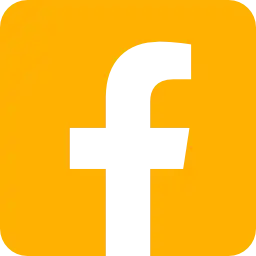Spring is a wonderful season in northeastern Pennsylvania. Flowers are beginning to bloom, Spring Peepers and Wood frogs are calling and the birds are returning from their wintering grounds. People of all ages emerge from their homes as if from a cocoon, enjoying walking, gardening, playing and just enjoying the warmer weather. Ah, the season of new life….. for me, the beginning of late nights, early mornings, and the nonstop ringing of the telephone. Life for a wildlife rehabilitator gets very busy this time of year. Its baby season! Young Gray Squirrels arrive first. Found curled up in the insulation of walls and attics, they are removed when the homeowners begin to hear the mother squirrel scurrying about and discover they are sharing their home with rodents that can do quite a bit of damage. Baby squirrels also fall from nests in chimneys, from tree nests during wind storms and when tree – cutters fell the den tree. Like most mammals, they are born blind, deaf and hairless. The mother provides her special milk and her body heat until the babies grow. Unlike other rodents, though, squirrels develop slowly, not opening their eyes until they are four weeks old. At the Pocono Wildlife Rehabilitation and Education Center a formula is provided that closely matches the milk of each species we raise, and proper heat and humidity are maintained to allow the young squirrels to grow, get fuzzy, open their eyes, and begin to eat solid foods. The process is not quite as easy as it sounds! When they are tiny, baby squirrels need to be fed every four hours, round the clock. We must stimulate the orphans to urinate and defecate, which they do not do themselves. You probably never thought about this, but if baby animals relieved themselves in the nest or den, it would get very stinky and dirty quickly! Mom takes care of this by licking the babies. Five week old squirrel We prefer to use tissues. When the babies open their eyes, they are full of wonder. Without fear, they approach each other, us, and their food with curiosity. Slowly, a variety of foods are added to the diet as we gradually reduce the number of formula feedings to once per day. They are never provided with any human contact besides the actual activities involved with feeding. By interacting with each other, and not people, when these orphans are old enough to fend for themselves, they can be released back to the wild (away from homes and roads).
Bunnies are brought to the Wildlife Center for many reasons. Dogs, cats, lawnmowers, weed whackers, children, and shovels and rakes find the nests, which are usually shallow depressions in the ground lined with hair from the mother and covered with dry vegetation. Mother rabbits are very clever, and only visit the nest early in the morning and in the evening to avoid giving away the location of her defenseless babies. Bunnies, like squirrels, are born blind, deaf, and hairless, but grow quickly and are out of the nest in a month, requiring no further help from their mother. Their care requires less time, but they are very fragile, and can literally “frighten to death” from the sight of people. Sadly, they are so cute that many times, they are delivered in the 8-10 day old Cottontail Rabbits hands of young children, and after having been kissed, photographed, fed cow’s milk or human formula, they perish simply from the stress of it all. We provide the concentrated formula they need, directly into their bellies with a tube, minimizing handling time to about thirty seconds, three times a day. As soon as they open their eyes, they begin to lap formula from a dish and begin eating clover, dandelion, cheerios and other healthy foods. When the rabbits’ ears are standing up and they are eating solid foods, they are released in old fields full of food and cover before they are much bigger than a dollar bill. Opossums are unlike any other PA mammals. Because they are marsupials, the babies are carried in the mother’s pouch until they are old enough to Cottontail rabbit ready for release travel clinging to her back. They become orphaned when the mother is hit by a car. Unlike raccoons, skunks and squirrels, who then become left in a den, never to be found and rescued, the babies may survive up to two days in that pouch. Educated members of the public stop when they find a freshly – killed opossum to see if babies are indeed in the pouch, then bring them to the Center for care. These marsupial babies are feed with the stomach tube until they can lap from a dish. At that time they begin to grow quickly, eating foods from dead mice and chicken to fruits and vegetables. They are Orphaned opossums released back to the wild when they reach about 8-9 inches plus the tail.
In like fashion, the orphan parade continues through the summer and includes, fawns, foxes, skunks, and other mammals. If you find an wild animal that appears to need help, please call the Wildlife Center at 570-402-0223 before picking it up. Some animals can be dangerous or can carry diseases Many times, what appears to be a problem may not be at all, or the issue can be resolved without human intervention. Remember-there is no substitute for the care only a mother can provide. Licenses are required by the PA Game Commission and US Fish and Wildlife Service to house and treat native wildlife. Next month we’ll take a look at some of the birds cared for here at the Pocono Wildlife Rehabilitation and Education Center, including baby songbirds, raptors and waterfowl.
- Credit: Kathy Uhler






